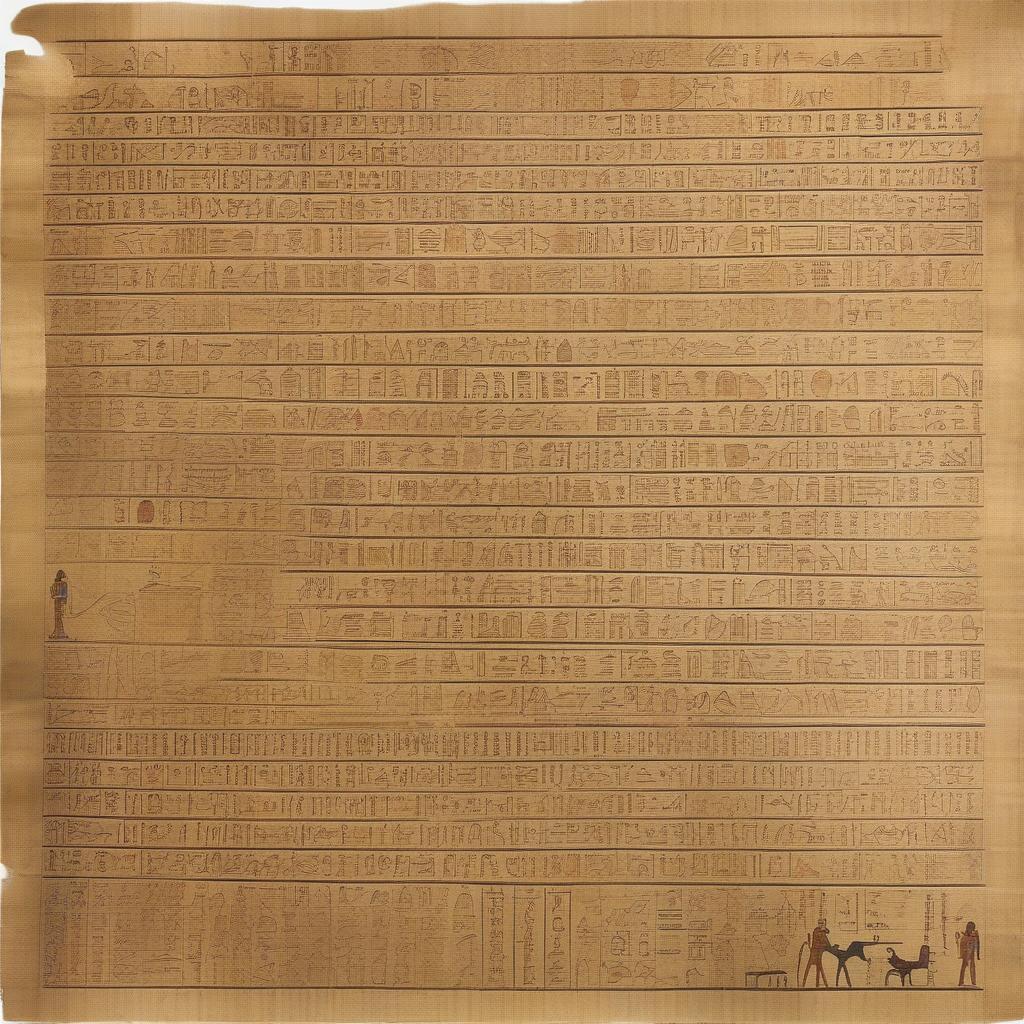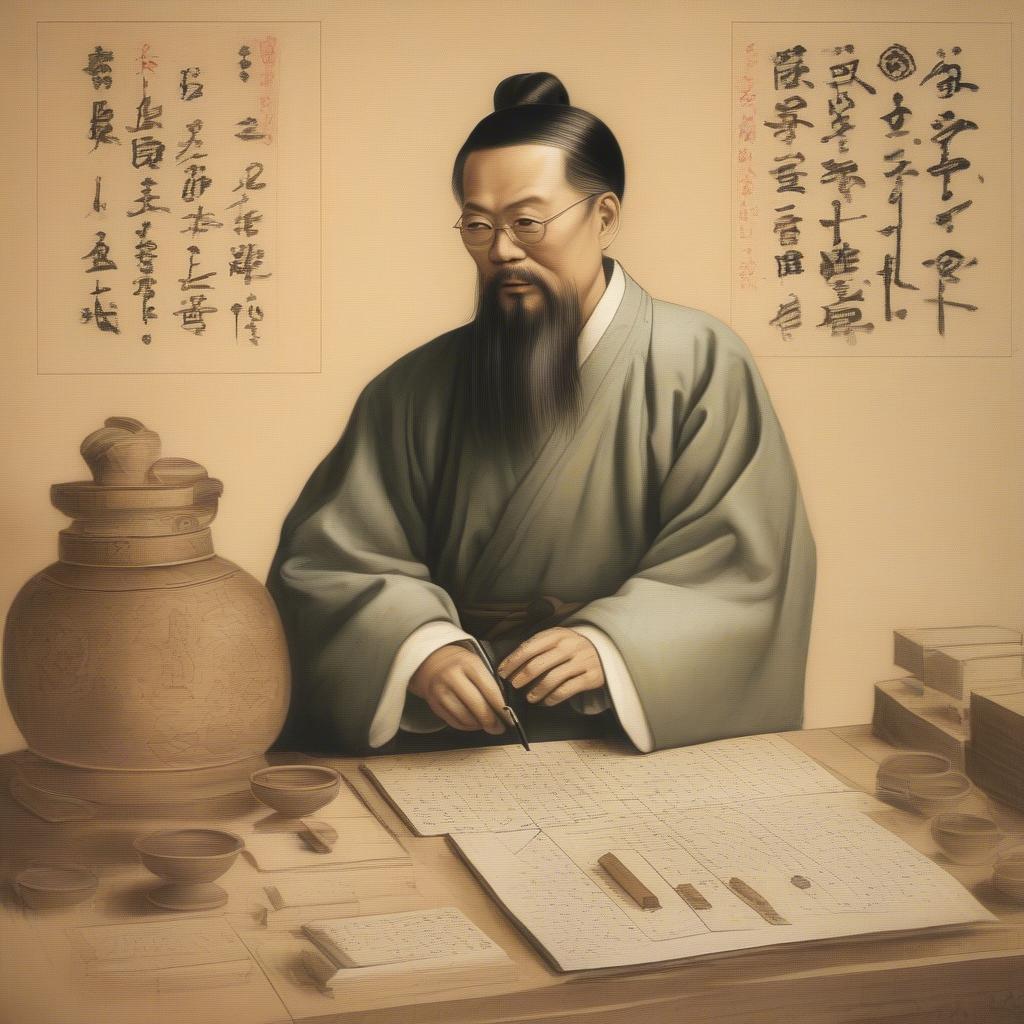
Algebra, the cornerstone of modern mathematics, didn’t emerge overnight. Its development spans centuries and cultures, involving contributions from numerous brilliant minds. So, Who Discovered Algebra? The answer isn’t a simple one. Instead of a single discoverer, algebra evolved through a series of discoveries and advancements made by mathematicians across different civilizations.
Table Content:
One of the earliest contributors to algebraic thinking can be traced back to ancient Mesopotamia, around the 18th century BCE. Babylonian mathematicians developed sophisticated methods for solving linear and quadratic equations, documented on clay tablets. These solutions, though presented without the symbolic notation we use today, demonstrated a practical understanding of algebraic principles. They used methods akin to completing the square and even tackled problems involving cubic equations. This era represents the seeds of algebra, a pre-algebraic stage focused on solving practical problems rather than abstract theory.
Ancient Egypt also contributed to the early development of algebraic thinking. The Rhind Mathematical Papyrus, dating back to around 1650 BCE, contains problems involving linear equations and geometric progressions, demonstrating an understanding of mathematical relationships that would later be formalized in algebra. These early Egyptian mathematicians used a method called “false position” to solve equations, a technique that involved making an initial guess and then adjusting it based on the result.
 Ancient Egyptian Mathematics Depicted on the Rhind Papyrus
Ancient Egyptian Mathematics Depicted on the Rhind Papyrus
The Greeks, renowned for their contributions to geometry and logic, also played a significant role in the journey towards algebra. Diophantus of Alexandria, a 3rd-century CE mathematician, is often considered the “father of algebra” for his groundbreaking work Arithmetica. This treatise introduced symbolic notation for unknown quantities and powers, paving the way for a more abstract and generalized approach to solving equations. Diophantus also explored indeterminate equations, also known as Diophantine equations, which have influenced number theory significantly.
 Diophantus' Arithmetica: A Foundational Text in Ancient Greek Algebra
Diophantus' Arithmetica: A Foundational Text in Ancient Greek Algebra
The development of algebra took another leap forward in the Islamic Golden Age, spanning roughly from the 8th to the 13th centuries CE. Al-Khwarizmi, a Persian mathematician, wrote Al-Kitab al-mukhtasar fi hisab al-jabr wal-muqabala (The Compendious Book on Calculation by Completion and Balancing), from which the word “algebra” is derived. This book presented systematic methods for solving linear and quadratic equations, establishing algebra as a distinct discipline. Al-Khwarizmi’s work laid the foundation for the development of algebra in Europe. He introduced the concept of balancing equations, which involves manipulating both sides of an equation to isolate the unknown.
 Al-Khwarizmi's Contribution to Algebra During the Islamic Golden Age
Al-Khwarizmi's Contribution to Algebra During the Islamic Golden Age
Indian mathematicians also made important contributions during this period. Brahmagupta, a 7th-century mathematician, worked with negative numbers and zero, further expanding the scope of algebraic operations. His work on indeterminate equations paved the way for later advancements in number theory.
European mathematicians began to engage with algebra in earnest during the Renaissance. The rediscovery of ancient Greek and Islamic texts spurred further development. Scholars like Leonardo of Pisa, better known as Fibonacci, introduced Hindu-Arabic numerals and algebraic methods to Europe through his book Liber Abaci.
The development of symbolic algebra in the 16th century marked a crucial turning point. François Viète, a French mathematician, introduced the use of letters to represent both known and unknown quantities, laying the foundation for modern algebraic notation. This innovation allowed for a more concise and powerful way to express and manipulate algebraic equations. who created mathematics also delves into the evolution of mathematics in general.
The evolution of algebra continued into the 17th and 18th centuries with the development of analytic geometry by René Descartes and the calculus by Isaac Newton and Gottfried Wilhelm Leibniz. These advancements further solidified the importance of algebra as a fundamental tool in mathematics and science. The creation of abstract algebra in the 19th century, focusing on abstract structures like groups and fields, marked another significant milestone, expanding the field beyond the study of equations.
So, while we cannot pinpoint a single individual who discovered algebra, we can appreciate the long and rich history of its development. From the practical problem-solving of the Babylonians and Egyptians to the abstract theories of modern mathematicians, algebra has evolved through the collective efforts of numerous brilliant minds across different cultures and time periods.
Conclusion
Algebra, far from being a sudden discovery, is the result of a fascinating journey of mathematical thought spanning millennia and civilizations. While Diophantus and Al-Khwarizmi are often highlighted for their pivotal contributions, their work builds upon the foundations laid by Babylonian, Egyptian, Greek, and Indian mathematicians. This collective effort transformed algebra from practical problem-solving techniques into the abstract and powerful mathematical discipline we know today. Understanding this historical context enriches our appreciation for the profound impact algebra has on our world.
FAQ
- What is the origin of the word “algebra”? The word “algebra” comes from the Arabic word “al-jabr,” meaning “reunion of broken parts” or “completion,” found in the title of Al-Khwarizmi’s influential book.
- What are some practical applications of algebra? Algebra has countless applications in various fields, including physics, engineering, computer science, finance, and even art. It’s used in everything from designing bridges to developing computer algorithms.
- Why is algebra considered important? Algebra provides a powerful language for describing and manipulating mathematical relationships. It’s essential for understanding many other branches of mathematics and science.
- How did symbolic algebra revolutionize the field? Symbolic algebra, introduced by François Viète, allowed mathematicians to represent unknown quantities with letters, enabling more generalized and abstract problem-solving.
- Who are some key figures in the history of algebra? Key figures include Babylonian and Egyptian mathematicians, Diophantus, Al-Khwarizmi, Brahmagupta, Fibonacci, and Viète.
- What is abstract algebra? Abstract algebra is a more modern branch of algebra that focuses on abstract structures like groups, rings, and fields, going beyond the study of equations.
- Where can I learn more about the history of algebra? Numerous books and online resources explore the rich history of algebra in greater detail.
